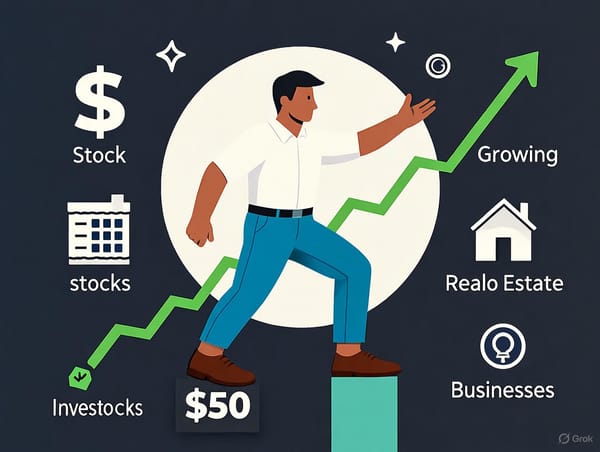The Ideological Battlefield
In a fractured world, ideological battles over democracy, authoritarianism, and cultural identity shape global power struggles, demanding we engage with ideas as tools for unity rather than weapons of division.

In a world of rapid globalization, technological disruption, and shifting alliances, the struggle for power is as much about ideas as it is about resources or territory. Ideologies—those deeply held beliefs about how societies should function—form the invisible fault lines of geopolitics. From the Cold War’s capitalism-communism divide to today’s clashes over democracy, authoritarianism, and cultural identity, ideological battles continue to define global tensions. This article explores the historical roots of these conflicts, their evolution, and their profound impact on the 21st century’s power dynamics.
The Roots of Ideological Conflict
Ideologies are born from human struggles—economic hardship, cultural shifts, or quests for power. The modern era of ideological warfare began with the Enlightenment, when ideas of individual liberty, reason, and secular governance challenged monarchies and religious authority. The French Revolution of 1789 was a turning point, pitting republican ideals against tradition and inspiring debates that echoed worldwide.
The 19th century’s Industrial Revolution unleashed new ideologies: capitalism, socialism, and nationalism. Capitalism celebrated individual enterprise, socialism sought collective solutions to inequality, and nationalism fueled self-determination but also division. These ideas clashed in the 1848 revolutions across Europe, revealing their power to mobilize masses, even if those uprisings were largely quelled.
The 20th century turned ideological tensions into global conflicts. The 1917 Russian Revolution created a communist state opposed to Western capitalism, setting the stage for the Cold War. Fascism’s toxic mix of nationalism and authoritarianism fueled World War II. These weren’t just territorial wars—they were battles over competing visions of humanity: liberal democracy, Marxist collectivism, or fascist hierarchy.
The Cold War: Ideology’s Global Stage
The Cold War (1945–1991) was ideology’s grand theater. The United States and Soviet Union competed not just with arms but with ideas: capitalism’s promise of freedom and prosperity versus communism’s vision of equality and state-led progress. The world became a chessboard—proxy wars in Korea, Vietnam, and Afghanistan; ideological footholds in Latin America and Africa; and a cultural contest through propaganda, film, and the space race.
Yet the Cold War wasn’t black-and-white. China’s Maoist communism diverged from Soviet orthodoxy, while the West grappled with internal debates over civil rights and social welfare. The Non-Aligned Movement, led by nations like India and Yugoslavia, rejected both superpowers’ frameworks, advocating for sovereignty. When the Berlin Wall fell in 1989 and the Soviet Union collapsed in 1991, liberal democracy seemed triumphant. Political scientist Francis Fukuyama called it the “end of history.” But history had other plans.
The Post-Cold War Illusion and New Divides
The 1990s promised a unipolar world under liberal democracy, with globalization fostering trade and connectivity. Yet this vision overlooked cultural and historical differences. For many, globalization felt like Western imposition, not liberation. The 9/11 attacks and the “War on Terror” exposed a deeper clash of worldviews, with radical Islamism rejecting both liberalism and secular authoritarianism. Russia, under Vladimir Putin, revived a nationalist ideology blending Orthodoxy, state power, and anti-Western sentiment. China forged a hybrid of authoritarianism and market economics, challenging the idea that democracy is essential for prosperity.
Today’s ideological landscape is messier than the Cold War’s binary. Liberal democracy, authoritarian capitalism, nationalism, and religious fundamentalism compete in a multipolar world, shaping how nations align or clash.
Democracy vs. Authoritarianism: A Core Divide
The tension between democracy and authoritarianism is a defining fault line. Liberal democracies, led by the U.S. and Europe, champion individual rights, free elections, and rule of law. But their credibility has waned amid polarization, inequality, and institutional distrust. The 2008 financial crisis, rising populism, and events like the 2021 U.S. Capitol riot have fueled perceptions of democratic dysfunction.
Authoritarian regimes, by contrast, tout stability and efficiency. China’s rapid growth and technological advances under Communist Party rule suggest centralized control can outperform democracy. Russia’s propaganda frames its strongman model as a defense against Western decline. Even smaller nations, like Hungary under Viktor Orbán, adopt “illiberal democracy,” blending democratic forms with authoritarian tactics.
This contest plays out globally. Authoritarian states extend influence through initiatives like China’s Belt and Road or Russia’s energy exports. Democracies counter with alliances like NATO and human rights advocacy, but their moral authority is questioned when they align with repressive regimes. The 2022 Russian invasion of Ukraine highlighted this divide, with democracies backing Kyiv while authoritarian states supported Moscow or stayed neutral.
Cultural Identity and Nationalism’s Resurgence
Alongside this divide, nationalism—often tied to cultural identity—is resurging. Globalization, migration, and technology have disrupted traditional notions of belonging, sparking backlash. Brexit, India’s Hindu nationalism, and “America First” rhetoric reflect fears of cultural erosion. While nationalism can foster unity, its exclusionary forms drive division. In Asia, historical grievances—like those between China and Japan—fuel nationalist tensions.
The internet amplifies these trends. Social media creates echo chambers where nationalist narratives thrive, and state actors use disinformation to stoke division or rally support.
Technology as an Ideological Catalyst
Technology has transformed ideological battles. Platforms like X democratize discourse, amplifying marginalized voices but also spreading propaganda and misinformation. Authoritarian regimes leverage technology to entrench power—China’s Great Firewall and social credit system enforce conformity, while Russia’s cyber operations destabilize democracies. Even democracies struggle to balance free speech with curbing harmful content.
Technology also reshapes economic ideologies. AI and automation revive debates over capitalism’s inequalities and the state’s role in ensuring fairness. Cryptocurrencies challenge centralized finance, embodying libertarian ideals. As technology evolves, it will continue to amplify ideological divides.
Why Ideology Matters
Ideologies shape destinies—deciding who holds power, whose voices matter, and how resources are allocated. In a world with nuclear risks, climate crises, and interconnected economies, ideological conflicts carry existential stakes. A misstep in U.S.-China rivalry could spark catastrophe. Failure to bridge cultural divides could perpetuate violence. Refusing to adapt ideologies to new realities—like technological disruption or ecological limits—could doom societies.
Yet there’s hope. Ideological diversity, approached with curiosity, can drive innovation. Blending democratic accountability with efficient governance or cultural pride with global cooperation could yield better models. The challenge is to navigate these fault lines not as adversaries but as collaborators seeking common ground.
Navigating a Fractured World
Ideological fault lines are not fixed—they evolve with each crisis and breakthrough. History shows ideas can divide or unite, ignite wars or inspire progress. The Enlightenment brought liberty and tyranny; the Industrial Revolution delivered prosperity and exploitation; the digital age offers connection and chaos.
The world feels fractured but not broken. The clash of democracy versus authoritarianism, nationalism versus globalism, and tradition versus innovation will shape geopolitics for years to come. Beneath these divides lies a shared human desire for dignity, security, and meaning. By anchoring our ideologies to these aspirations, we can transform this battlefield into a proving ground for a better world. The task ahead is clear: engage with ideas, not as weapons, but as tools to build a future that serves all of humanity.





